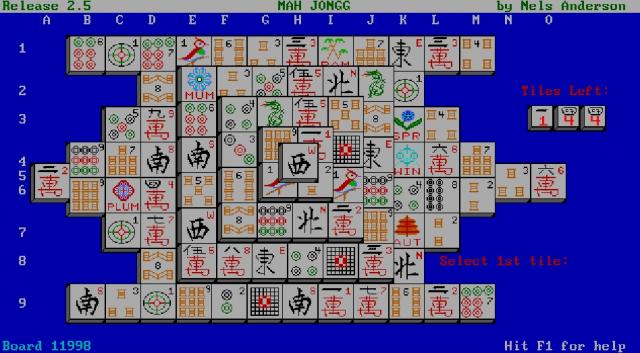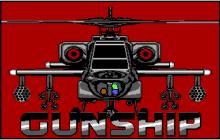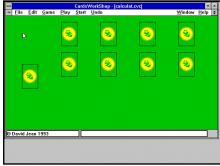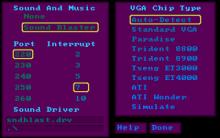Mahjong
How to play Mahjong
- Launch the game on your DOS system.
- Observe the board and identify matching pairs of free tiles.
- Click on a pair of identical tiles to remove them from the board.
- Continue matching and removing tiles until the board is clear.
- If no more moves are possible, the game will end.
Mahjong Description
Step into the intricate world of Mahjong, a captivating tile-matching puzzle game released in 1986 for DOS. This classic game brings the ancient Chinese pastime to the PC, challenging players to clear the board by matching pairs of tiles. Each tile features unique symbols, ranging from bamboo and characters to circles and winds, all beautifully rendered in simple but effective graphics.
Mahjong's gameplay revolves around strategy and careful observation. Players must identify and select pairs of identical tiles that are free to be moved, meaning they are not blocked by other tiles on the left or right. The goal is to clear the board of all tiles, which requires both patience and a keen eye for detail. As the tiles are removed, the board opens up, revealing new opportunities for matches.
This 1986 DOS version of Mahjong offers a pure and straightforward interpretation of the game, perfect for enthusiasts and newcomers alike. Its timeless appeal lies in its blend of mental challenge and satisfying gameplay, making it a beloved choice for puzzle fans on the DOS platform.
Cheats/Hints/Walkthroughs for Mahjong

Mahjong, a 1986 DOS game, stands out as one of the earliest digital adaptations of the traditional Chinese tile-based game. Developed in the mid-1980s, this version brought the ancient game into the homes of computer users, allowing them to enjoy Mahjong’s strategic and calming gameplay on their PCs.
The Origins of Mahjong
Mahjong's history stretches back centuries, originating in China during the Qing dynasty. The game traditionally involves four players and is played with a set of 144 tiles based on Chinese characters and symbols. While the classic game focuses on strategy and luck, the 1986 DOS version typically simplifies this by allowing single-player matches against the computer or time-based challenges.
Gameplay and Features of Mahjong (1986 DOS Game)
Traditional Tile Matching
The core gameplay of Mahjong (1986 DOS game) involves matching pairs of identical tiles to clear the board. The challenge lies in the fact that only tiles that are not covered by others and have at least one free side can be matched. This requires players to think several steps ahead, planning their moves carefully to avoid getting stuck.
Iconic DOS Graphics
Being a game from the 1980s, the graphical representation is simple yet effective. The tiles are clearly depicted with traditional Chinese symbols, numbers, and characters. The game’s interface is user-friendly, with intuitive controls that were advanced for its time.
Sound and Music
The auditory experience in the 1986 DOS version of Mahjong is minimalistic, typical of early PC games. Simple beeps and tones accompany the tile movements and matches, which adds to the nostalgic feel of playing classic DOS games.
Tips and Strategies for Mahjong
Plan Ahead
One of the most important strategies in Mahjong is planning several moves ahead. Since only exposed tiles can be matched, it's crucial to think about which tiles will become accessible after a match.
Focus on Layers
Clearing the topmost layers of tiles first can help reveal more options and prevent you from running out of moves too early in the game.
Use Hints Wisely
Some versions of Mahjong provide hints or allow you to reshuffle the tiles if you get stuck. Use these features sparingly, as they can reduce the challenge and satisfaction of solving the puzzle on your own.
Similar Games to Mahjong
Shanghai
Released around the same time as Mahjong, Shanghai is another tile-matching puzzle game that uses Mahjong tiles. It offers similar gameplay mechanics but with different layouts and challenges.
Solitaire Mahjongg
A solitaire version of Mahjong, this game offers a variety of tile layouts and increasingly difficult levels, providing a more modern twist on the classic game.
Tai Pei
Another popular Mahjong solitaire game from the DOS era, Tai Pei features unique tile arrangements and a relaxing gameplay experience.
The Cultural Impact of Mahjong
Mahjong has had a significant cultural impact, both as a traditional game and in its digital form. The 1986 DOS game helped popularize Mahjong in the West, introducing many players to the joys of tile-matching and strategy. The game's accessibility and engaging gameplay have ensured its enduring popularity, with countless versions and adaptations appearing on various platforms over the years.
Mahjong (1986 DOS game) remains a beloved classic in the world of digital gaming. Its simple yet challenging gameplay, combined with the nostalgic appeal of DOS graphics and sound, makes it a must-play for fans of retro games. Whether you're a long-time Mahjong enthusiast or a newcomer to the game, this version offers a timeless puzzle experience that continues to captivate players.
By exploring the origins, gameplay features, and cultural significance of Mahjong, as well as similar games, you can fully appreciate the legacy of this classic 1986 DOS game.

















Write a comment